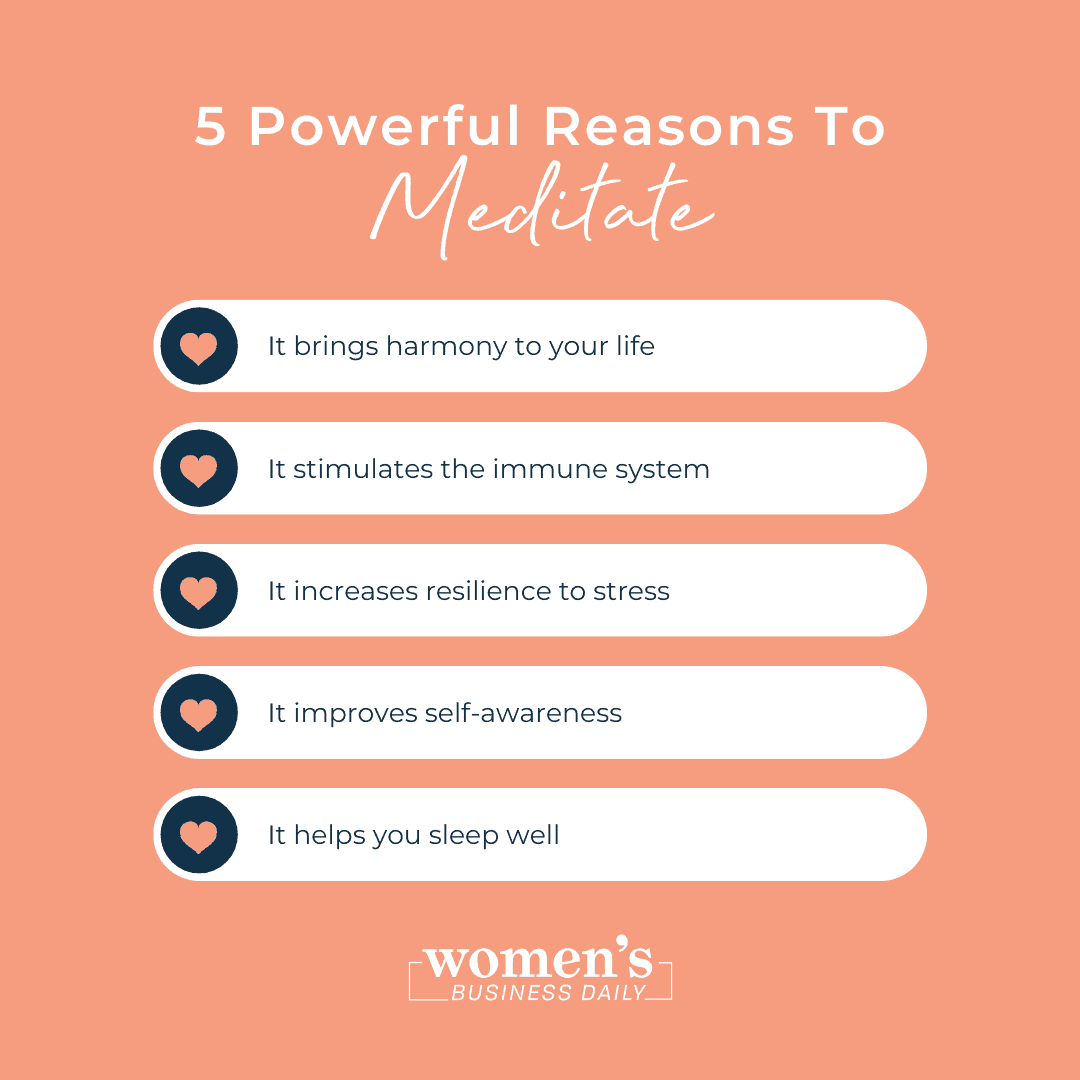While many self-care articles and health gurus will tout the benefits of meditation, few of them take the time to recognize how difficult it is for beginners. Lots of people give up on meditation after only a few tries because it just doesn’t seem to work. Learning how to meditate properly can take months or years to truly master, and it can be frustrating when you feel like it’s not working for you.
Whether you’re trying meditation for the first time or are trying again after some failed attempts, we’re here to help. Check out these suggestions on how to incorporate guided meditations into your life in a way that helps you control the racing thoughts and feelings in your mind.
How to Meditate
The Benefits of Mediation
Unfortunately, the people that can most benefit from the effects of meditation practice are those who will struggle the most with it. When you learn how to meditate, you can stop the mind from wandering and keep your consciousness in the present moment. Being able to pay attention to the moment you are in keeps you from worrying about the future and regretting the past: two things outside of your control.
The popularity of meditation has skyrocketed over the last few years. 14.2% of people in the US have tried it; for reference, 14.3% of Americans have tried yoga.
When surveyed on the reasons people tried meditation, these were the study’s responses:
- 76% said general wellness
- 60% said improved energy
- 50% said to aid memory and focus
- 29% said anxiety relief
- 22% said stress relief
- 18% said depression relief
When it came to the reasons people tried out meditation, 60% of those surveyed said meditation significantly helped them achieve those goals.
Meditation can also play a large role in success in the workplace and at school. A company that tried meditation in the workplace found that their productivity increased by 120%. A school that implemented a meditation program found that suspensions were reduced by 45%. When you emphasize the mental health of your employees, students, and yourself, you all are more likely to find success in your professional field and personal lives.

Getting Started
When you start meditating, you’ll want to find a guided meditation audio that works for you. The mediation app Insight Timer is completely free and has thousands of audio files available. The app walks you through the options of what you’re looking for to narrow down seemingly infinite choices into a manageable amount. Once you go through the categories about your goals for meditation and the different practice techniques available, you can even filter the results by specifics such as length of the audio and sex of the speaker. For example, this feature is helpful in case you respond better to listening to a female voice and only have 15 minutes to devote to meditation.
If you don’t resonate with the first form of meditation you pick, don’t give up. There are a lot of factors that determine whether the meditation track is right for you, and it will take a lot of experimentation to find the tracks you return to again and again. Once you find those ones you love, you can favorite them in the app so you don’t lose them.
The Basics of How to Meditate
Meditation is all about quieting your mind by focusing on your breath. It seems simple, but for someone with an overactive mind, or even a burned-out one, trying to quiet your mind and stay focused on just being present is much harder than it seems.
If you start by listening to a guided meditation, you get to follow along with the speaker’s instructions. They’ll guide you on how to imagine your breath entering your body, what you should picture in your mind, and how to return to the breath when your mind wanders.
These voices are calming, soothing, and assuring. Many will tell you that mistakes are okay; one of the roadblocks to mastering meditation is when you aren’t instantly perfect at the practice, you think you can never master it. You think if you can’t focus, meditation isn’t for you. If you feel your mind start to wander, don’t be hard on yourself; your thoughts will only race more. Instead, just return to the sensation of the breath.
No matter what type of meditation you choose, they all rely on the basic principle of returning to the breath to stay in the present moment. All you have to do when you feel your mind start to wander is to guide yourself back to your breathing with a nice deep breath.
Every inhale and exhale is like a reset. You get a million chances during your meditation to start over. You haven’t “failed” your meditation because you felt your mind wander. You can always start over, even if you have to reset yourself every three seconds.
If you keep that simple principle in your mind, you don’t have to let yourself overcomplicate the practice.
For the Racing Minds
If you’re someone with a mind that loves to wander down rabbit holes and run away with thoughts of to-do lists and future projects, your mind needs to add another element to help yourself focus.
It might seem counter-intuitive to think about more things to help you focus on the audio, but adding another element for your mind to work with should help tune out thoughts of the future and help you focus on the present.
- Breathe in colors. While inhaling and exhaling, devote each breath to a color. The color will change every time you take in or exhale a breath. Try to focus only on that color, not thinking about the next color you will pick. Say the name in your head and imagine the appearance of that color to fully immerse yourself. Focus on only one color at once, and it’s okay if you repeat colors.
- Practice yoga while listening to the audio. Sometimes, the thought of sitting still and listening to a meditation feels overwhelming; it feels like you aren’t doing enough. If you’re someone who can’t sit still, try performing a series of slow stretches to help keep your body and mind engaged in the present moment so you can pay attention to the meditation. Having something physical to do can keep your head focused on the mindfulness meditation and can help you more fully connect the thought of the breath with practice.
- Replay a mantra with each breath. If you’re having trouble when you try to focus on your breath, pick a mantra to repeat in your head every time you inhale and exhale. If you need even more to think about to keep your mind occupied, split the mantra into two parts: one you think during the inhale, one you think during the exhale.
- Try a walking meditation. Again, if you feel that you need to accompany the meditation with movement, a nature walk is the perfect way to give your body something to do while you focus on the mind. Even when you aren’t listening to a meditation, try to devote your walking time to living in the present moment, rather than thinking of all you have to do when you get where you’re going. Think of a mantra like “I am here, I am here, I am here” or “Admire the trees, admire the trees, admire the trees,” to repeat as you walk. This will occupy your thoughts to stop the flow of “I should” or “I have to” so you can instead enjoy the beautiful walk you’re on.
Truly Devote Yourself to Your Time of Meditation
The simplest, yet most complicated piece of advice for successful meditation?
You have to let yourself meditate.
It seems so simple; if you’re turning on the guided meditation, doesn’t that mean you’re letting yourself meditate?
Not necessarily. Even if you pick a track to listen to and you sit down for your allotted 15 minutes, if you don’t fully dedicate those 15 minutes to focusing on yourself, you aren’t truly meditating. You can’t let your mind replay on a loop all of the things waiting on your to-do list. If you spend this time thinking about what you have to do for the rest of the day, you didn’t really take that time to reset your mind. You have to truly believe that you deserve a break from all the hustle and bustle happening around you.
This time to meditate is a gift you give to yourself. Don’t let all the things that worry you steal this time of peace from you.
Author, Artist, Photographer.
Sarah Margaret is an artist who expresses her love for feminism, equality, and justice through a variety of mediums: photography, filmmaking, poetry, illustration, song, acting, and of course, writing.
She owns Still Poetry Photography, a company that showcases her passion for capturing poetic moments in time. Instead of poetry in motion, she captures visual poetry in fractions of a second, making cherished keepsakes of unforgettable moments.
She is the artist behind the Still Poetry Etsy shop, which houses her illustrations and bespoke, handmade items. She is the author of intricacies are just cracks in the wall, a narrative poetry anthology that follows a young woman discovering herself as she emerges from an abusive relationship.
- Sarah Margaret Henryhttps://www.womensbusinessdaily.com/author/sarah-margaret-henry/
- Sarah Margaret Henryhttps://www.womensbusinessdaily.com/author/sarah-margaret-henry/
- Sarah Margaret Henryhttps://www.womensbusinessdaily.com/author/sarah-margaret-henry/
- Sarah Margaret Henryhttps://www.womensbusinessdaily.com/author/sarah-margaret-henry/






